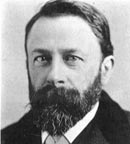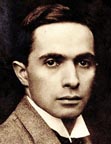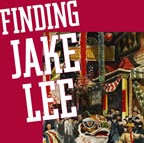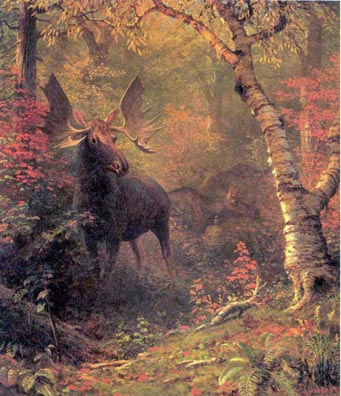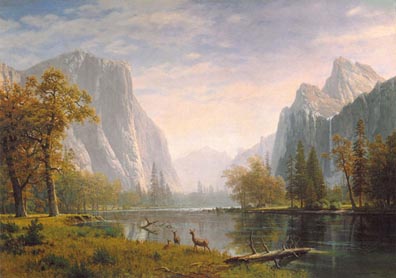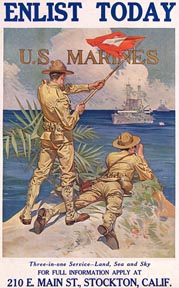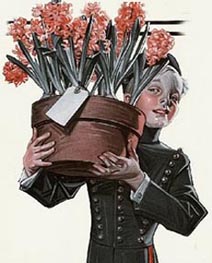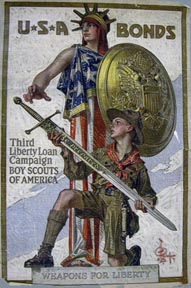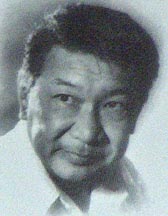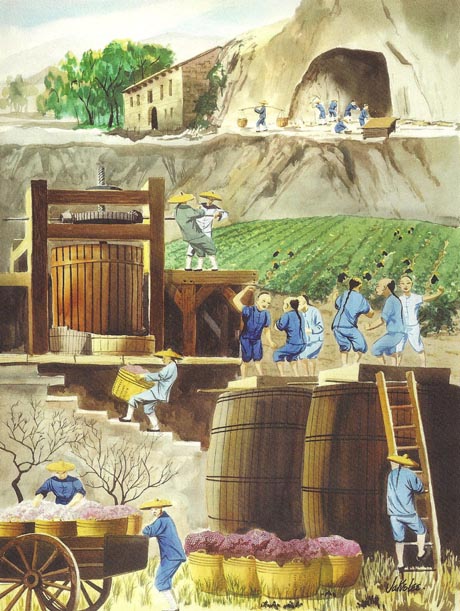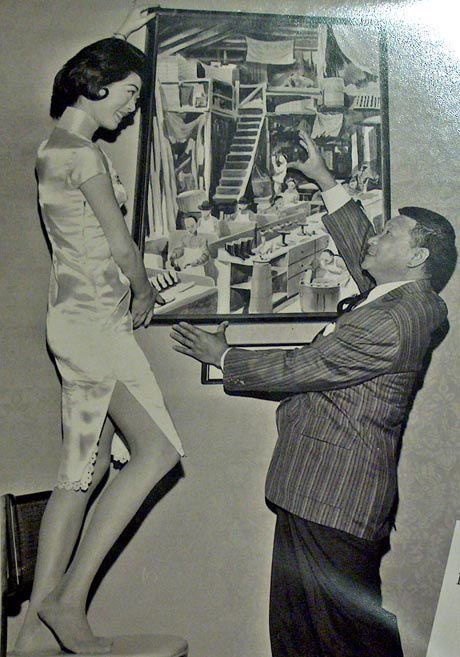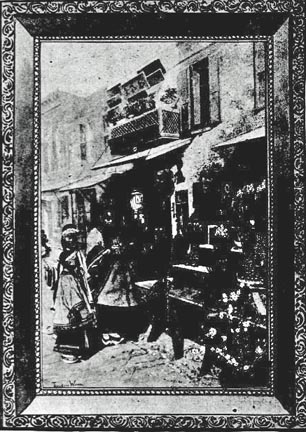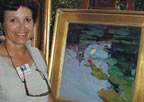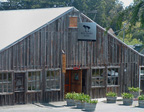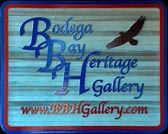 |
Homepage | Current Exhibit | Contact Us | Location | Bodega Bay Heritage Gallery Monthly Previously Offered | Archives of Gallery Exhibits & Newsletters |
|
|||||||||||||||||||
April 2011 Bodega Bay Heritage Gallery Monthly A Celebration of Early California, Western, and American Art ... Open Wednesdays through Sundays 10:00 - 5:00 (other times by appointment) 1785 Coast Highway 1, PO Box 325, Bodega Bay, CA 94923, 707-875-2911 (Map) email: Art@BodegaBayHeritageGallery.com | www.BodegaBayHeritageGallery.com |
|||||||||||||||||||||
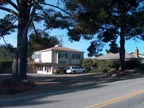 Visit us in our new home, 1785 Highway One, Bodega Bay |
News from our gallery |
||||||||||||||||||||
Museum Exhibits:
Bay Area, Southland & Beyond |
| Treasures at Stockton's Haggin Museum, The paintings of Albert Bierstadt and other American, Californian, and French Impressionists |
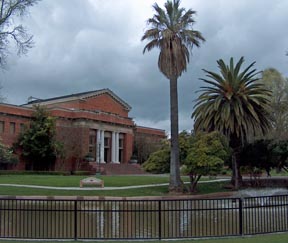 The centerpiece of Stockton's Victory Park, The Haggin Museum |
||||
When it comes to offering an amazing array of fascinating historic California paintings, Stockton's Haggin Museum stands proudly among northern California's other great museums, San Francisco's de Young and the Legion of Honor, the Oakland Museum, and Sacramento's Crocker Museum The Haggin features the largest display of paintings by Albert Bierstadt, accompanied with an array of works by William Keith, Thomas Hill, and Thomas Moran and famed Eastern and European artists. If you haven't been there yet, we highly recommend a visit to the Haggin Museum in your near future. |
|||||
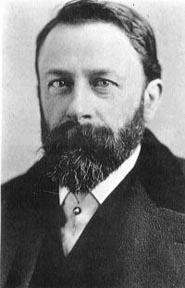 Albert Bierstadt, 1830 - 1902 |
Albert Bierstadt loved California and its magnificent scenery. His epic canvases of the Sierras, of coastal California, and of scenes throughout the West are filled with wonder. In his own time, and still today, some offer critiques of his work as being too majestic, a glorified version of nature, perhaps attacking Bierstadt for his extraordinary commercial success. |
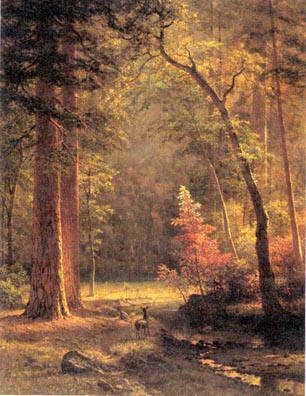 Albert Bierstadt Autumn Woodland, Oil on canvas, 44 5/8 x 34 in, after 1875 |
|||
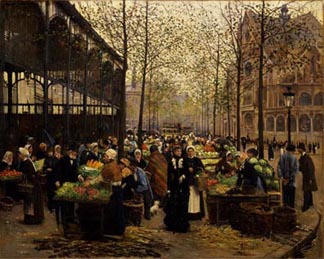 Jean Beraud, Les Halles. oil on canvas 25 3/8 x 32 in. , c. 1879 |
Stockton's Haggin Museum hosts the largest collection of Bierstadt paintings on display in one location anywhere, along with an array of works by French and American impressionists and post impressionists. Along side the Bierstadts are works by Jean Beraud, Thomas Hill, Thomas Moran, William Keith, William Merritt Chase, Pierre-Auguste Renoir, Paul Gauguin, Childe Hassam, Ralph Blakelock, and William- Adolphe Bouguereau. |
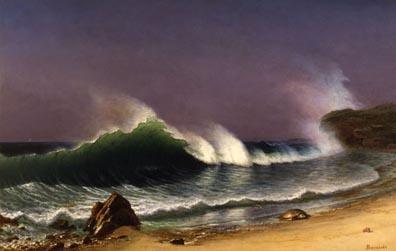 Albert Bierstadt A Wave Breaking on the Bahamas Coast, oil on canvas, 54 x 84 in., after 1878 |
|||
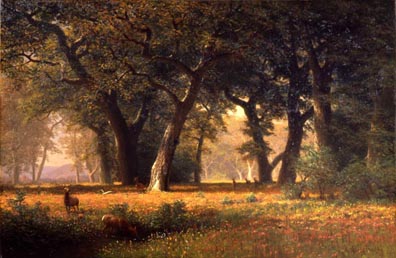 Albert Bierstadt Forest Monarchs, oil on canvas, 32 3/8 x 44 in., after 1875 |
Albert Bierstadt was born in 1830 near Dusseldorf, Germany. Two years later, his family moved to New Bedford Massachusetts. At age 23, Albert returned to Dusseldorf where he studied painting, focusing on Alpine landscapes. After four years of study, he returned to America in 1857 where he joined a survey expedition which enabled him to travel across the country.
He was quite an up to date artist. Four years prior to the Civil War, Bierstadt took photos of the American Landscape, an emerging |
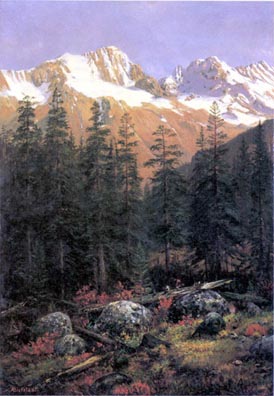 Albert Bierstadt Canadian Rockies, oil on canvas 27 7/8 x 19 1/8 in. circa 1890 |
|||
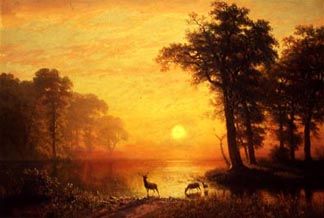 Albert Bierstadt Evening on Oneida Lake, oil on canvas, 30 x 44 in, After 1875 |
technology at the time which was both bulky and complex. His photos and sketches of mountain ranges and dramatic rock formations would show up in his canvases later on. He painted the American West on a grand scale, capturing the imagination of viewers and catapulting himself into international fame. His paintings sold well and gave Bierstadt a level of success unknown by most other artists. He was married in 1867 and visited London where he met Queen Victoria. His wife Rosalie needed to live in a warm climate for |
||||
|
|
health reasons, and the couple moved to Nassau in the Bahamas. He continued his work traveling throughout America and Europe, often returning for visits to his wife in Nassau. Although not known for his wildlife paintings, he certainly was impressed by wildlife. Beginning in the 1870's he began painting wild animals. His animal paintings linked Bierstadt with other notable European paintings, Sir Edwin Landseer and Rosa Bonheur. Moose was painted after 1880, and is Bierstadt's way of honoring the animal |
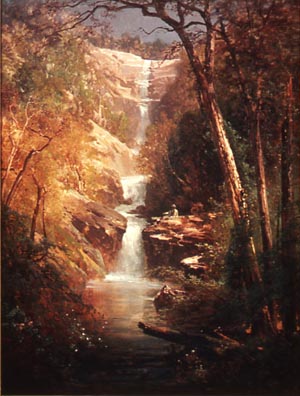 Thomas Hill, Waterfall, High Sierras Chilnu Waters. oil on Canvas 46 ¼ x 35 in. c. 1877 |
|||
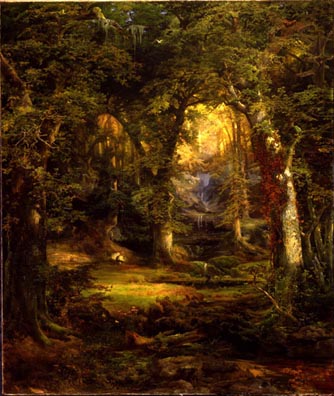 Thomas Moran, A Woodland Temple, oil on Canvas, 62 1/8 x 52 in., 1867 |
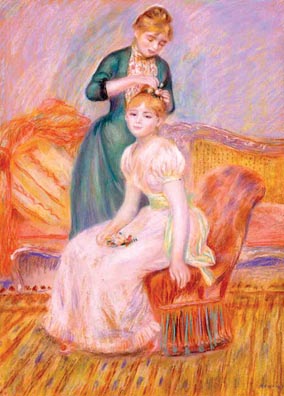 Pierre Auguste Renoir : La Toilette, The Coiffure, pastel on paper 32 x 23 5/8 in. circa 1888 |
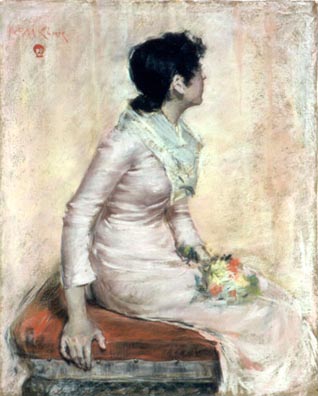 William Merritt Chase, The Artist’s Wife, pastel, 29 ½ x 23 ½ in., circa 1884 |
|||
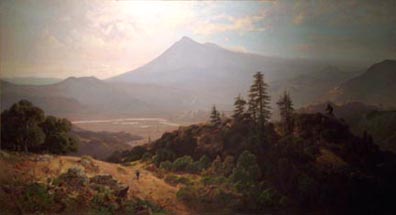 William Keith, Mount Tamalpais, 1879 oil on canvas, 40 x 72 in. |
which he shot earlier that year in Maine, the eighth largest antlers in sporting history. The head with its massive rack was stuffed and hung on the wall in Bierstadt's studio. |
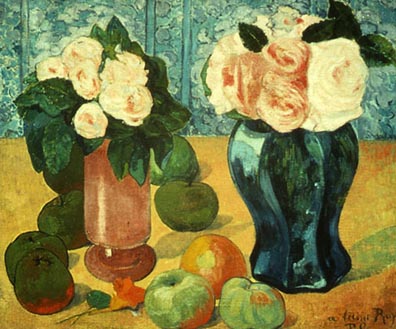 Paul Gauguin, Still Life Flowers and Fruit Oil on Canvas, 18 x 22, Undated |
|||
|
|
Two hundred of the Haggin Museum's paintings come from one collection, once housed in the New York townhouse of Louis Terah Haggin, 1847?-1929. Haggin collected highly regarded artists of his time. He frequently resided in Paris and collected the conservative salon painters such as Jean Beraud, Rosa Bonheur, and William Bougereau. Of American artists, he liked impressionist Childe Hassam and he especially loved Hudson River School painters, Albert Bierstadt and Thomas Moran. Louis Haggin was the wealthy son of James Ben Ali Haggin, a prominent Kentucky family. |
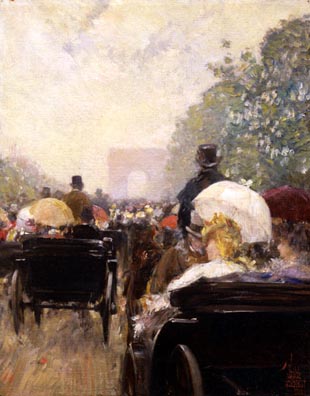 Childe Hassam, Carriage Parade, oil on canvas 36 ¼ x 19 3/8 in. , after 1910 |
|||
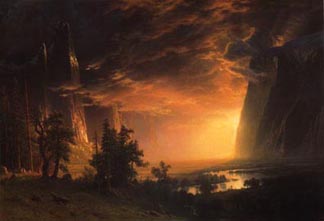 Albert Bierstad Sunset in the Yosemite Valley oil on Canvas 36 ¼ x 52 ¼ in. |
James Ben Ali Haggin came to California in the 1870's and built his fortune with investments in real estate and mining. He lived on Nob Hill and decorated his fifty room mansion with paintings. Louis continued in his father's art collecting ways, often with monumental works. |
||||
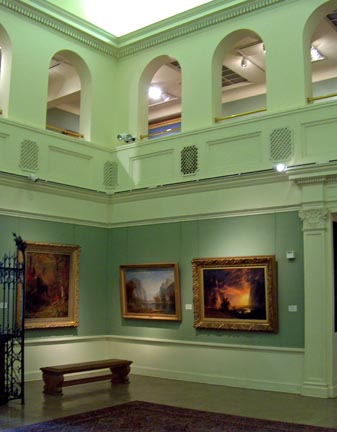 The Haggin's Hull Gallery |
The offer of these paintings was made to the San Joaquin Pioneer and Historical Society which set a goal of establishing a history museum in Stockton telling the story of Stockton's role as a major center of California's Central Valley. |
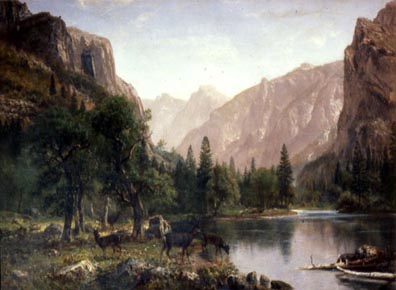 Albert Bierstadt In the Yosemite Valley , oil on canvas 24 x 32 in. circa 1890-1902 |
|||
| Previously from our August '10 newsletter, 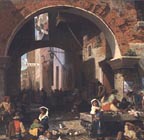 Albert Bierstadt at the de Young, Six Paintings Apart From What You Might Expect |
|||||
The San Joaquin Pioneer and Historical Society was unsuccessful in gaining much in funds to launch their project, and the offer from Elia Haggin McKee was most welcome and readily accepted. It not only came with a wealth of paintings, but with thirty thousand dollars to construct a building to house the collection. The only condition was that the museum was to be named for her father. Louis Terah Haggin. Thanks to the generosity of this gift, the Haggin Museum now serves two purposes, providing a window into the history of Stockton and the Central Valley, and as a well endowed art museum, featuring California, American, and European paintings of the late 19th century. |
|||||
| Back to the Top | |||||
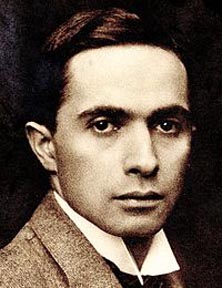 Joseph Christian Leyendecker, 1874 - 1951 |
Treasures at |
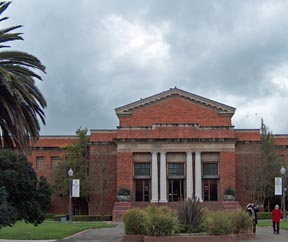 The centerpiece of Stockton's Victory Park, The Haggin Museum |
||||
J. C. Leyendecker is best known for his poster, book and advertising illustrations, but in a greater sense, he established a way of telling the American story graphically, with humor, with sentimentality blended with substance. His works were not only pleasing to gaze upon, but they touched a commonality, a sense of our communal joy of being part of America. |
||||||
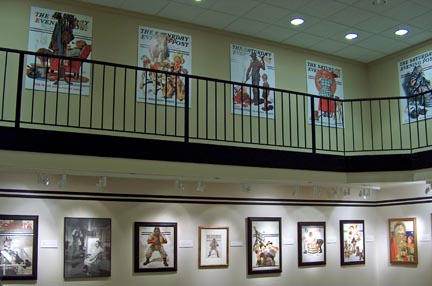 Tastefully displayed on two levels, including the familiar twin black stripes of the Saturday Evening Post's bannerhead, examples from the life and career of Joseph Christian Leyendecker bear witness to his contribution to the storytelling traditions he helped establish for artistic cover art. |
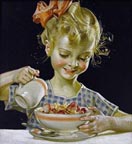 from Leyendecker's famed Kelloggs cereal ads |
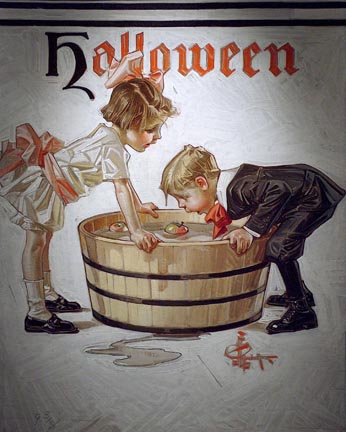 Bobbing for Apples |
||||
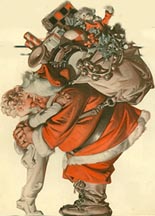 Our now familiar idea of Santa Clause |
||||||
|
In his career, he painted over 400 magazine covers, including 322 for the Saturday Evening Post. Norman Rockwell did one less cover, reserving the honor of most covers to his beloved mentor. Upon his return to Chicago, his emphasis on commercial art commenced a career that had him doing illustrations for Kellogg's cereals and a large number of magazine covers for Colliers and The Saturday Evening Post. Through his illustrations, Leyendecker touched and guided aspects of American culture. Our contemporary vision of Santa Claus as a red suited jolly fat man trimmed in white fur was first popularized by Leyendecker. In the May 30, 1914 edition of the Saturday Evening Post, he did a cover of a bellhop carrying a bouquet of hyacinths. This lead to President Woodrow Wilson's declaring Mother's Day an official holiday. He covered most of Americana, from its love of baseball, to advertising Kelloggs cereals, and using his artistry to help in the war effort, creating enlistment posters and selling war bonds. When we think of an artist capturing the essence of the purely American scene, we can't help but think of Norman Rockwell. But Rockwell's genius was not the product of his vision alone. He proudly stood on the broad shoulders of those who came before, and in his case, it was the shoulders of his friend and mentor, Joseph Christian Leyendecker. Today, we often think of Rockwell as the one who established the quintessential images of Americana, but Rockwell's accomplishments are a derivative of Leyendecker's artistry. Through their long friendship and association, Rockwell learned a great deal from Leyendecker. When critics discuss Rockwell, the conversation often results in a visit to the question "illustration or art." Perhaps Leyendecker's comment to a similar question adds light to this issue. Leyendecker once quipped that he preferred that his art be reproduced and appreciated by the wider population than having a comparatively few see it in a museum or gallery. |
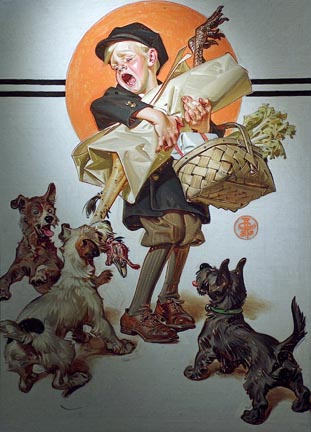 Bringing Home the Christmas Goose |
||||
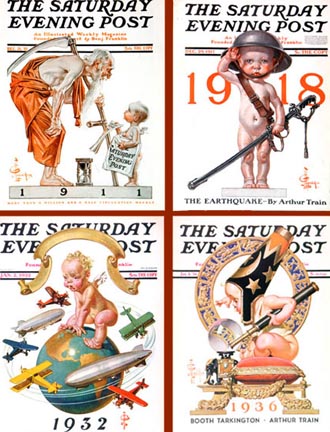 Over the years, Baby New Year's |
||||||
| Back to the Top | ||||||
Finding Jake Lee at the Chinese Historical Society-- |
||
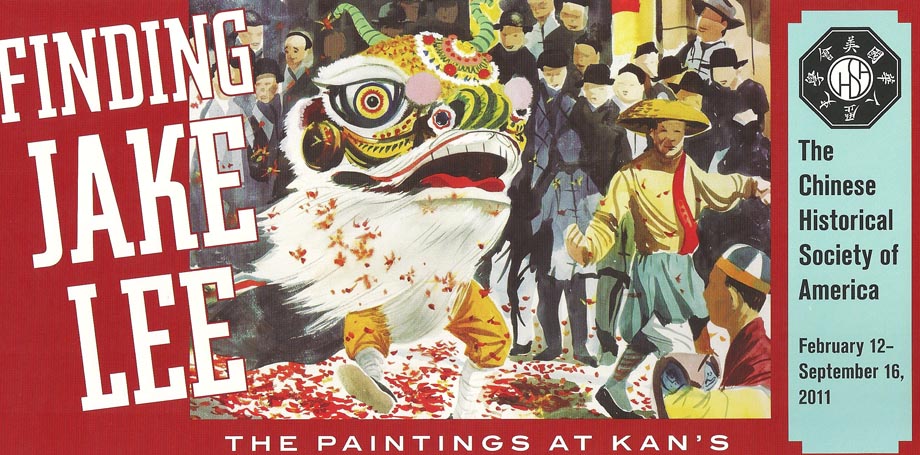 |
||
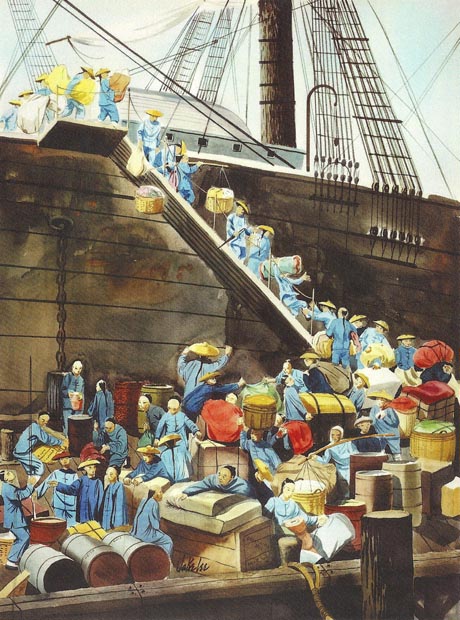 Immigrants Disembarking Ship 1849-Lured by the magic of California's Gold Rush, Chinese disembarked on San Francisco's waterfront en route to the gold mines. |
Many remembered these wonderful watercolors, but whatever happened to them? Twelve large watercolor paintings by artist Jake Lee depicted the Chinese American story and graced the walls of the famed Kan's Restaurant in Chinatown for years. San Franciscans and their out-of-town guests admired these works as they |
|
enjoyed the wonderous food, atmosphere and congenial company at the celebrated eatery. When Kan's closed, the paintings disappeared, at least until just this last year when Sue Lee of the Chinese Historical Society heard just days before eleven of the twelve were to be auctioned in Pasadena. She marshalled her forces, quickly flew to Pasadena for the auction, and was able to secure seven of these wonderful paintings for the Chinese Historical Society. She lost the other four to a single bidder, but is working to acquire those as well. |
||
But where was the twelfth painting? Sue Lee was most lucky. When she returned from Southern California, she learned that the twelfth painting was hanging in a local business and she was able to retrieve it for the museum. This one is different from the eleven others. Eleven were vertical and of the same dimensions, but the twelfth was horizontal, a depiction of Chinese Firehose brigade racing as part of a Fourth of July celebration in Deadwood, South Dakota. |
||
What is great about this exhibition is that it is bringing new light to Jake Lee's art and his story telling. Today he is seen as a marvelous visual chronicler of the Chinese American past. Borrowing from the WPA style of watercolors done during the Great Depression, Lee composed scenes showing how Chinese laborers participated in building America and were participating citizens. A watercolor artist and teacher, Jake Lee was best known as a commercial artist who did illustrations for magazines, greeting cards and book jackets. As a storytelling artist, he reminds Chinese Americans of how the Chinese were involved in numerous industries and endeavors. Lee's images challenge the stereotypes of Charlie Chan, Chinese laundrymen and "Hop Sing" houseboys and cooks. Jake Lee wanted to cause Chinese Americans to contemplate the kinds of lives lived by the early immigrants and to consider their contributions to the development of California. Taken together, these twelve paintings are Jake Lee's Chinese American Suite. Together, they tell the epic tale of an immigrant people who came with hope and a willingness to endure hardship and work extremely hard. In sweat shops of Chinatown, the railroad crews of the Central Pacific, the vineyards and orchards of Sonoma County, and shrimp fishing on San Francisco Bay, and Sierra Nevada mining, day by day, the Chinese climbed the American ladder of success from the lowest rung upward. Along the way, they shared the joy of life and never forgot their roots, maintaining language and tradition, celebrating Chinese New Years with Lion Dancers and firecrackers, hanging Chinese lanterns, and keeping alive Chinese literature, culture, and theater. Johnny Kan and Jake Lee were well matched as both tried to dispel inaccuracies about the Chinese in American life. |
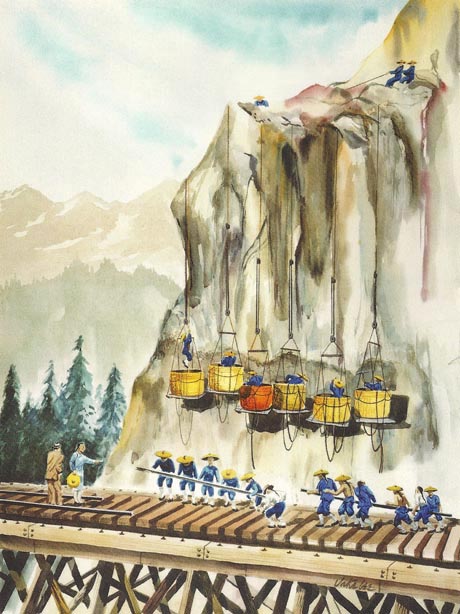 Laborers Working on Central Pacific Railroad In the Sierras, thousands of Chinese laborers build the Central Pacific tracks, which joined the Union Pacific to span America in 1869. |
|
Jake Lee was keenly aware of how stereotypes were built, because he worked for a while as an extra in Hollywood. After the war, the Hollywood studios were looking for Asians to play Japanese soldiers for all kinds of war pictures. As Jake often told the tale, he appeared in many of these classic films often being killed off, then was changed into a different uniform by the wardrobe department, and sent back onto the set only to be killed again. The four paintings not on exhibit are: Shoemakers in Massachusetts, 1870, Shrimp Camp at China Camp. Miners in the Mother Lode Country. and Lantern Making in San Francisco. |
||
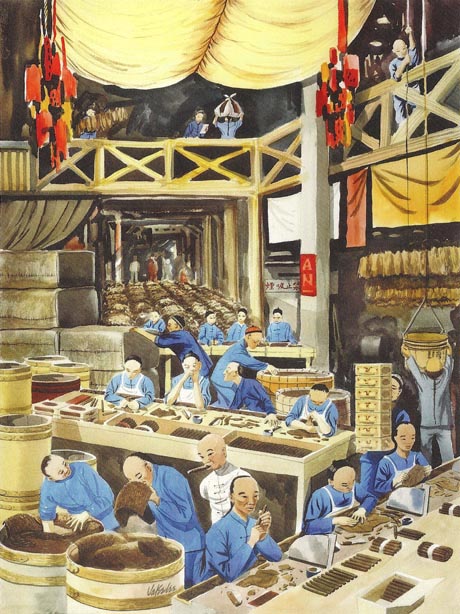 Cigar Makers in San Francisco Cigar-making in a shop in San Francisco,circa 1862, one of the flourishing trades at which the Chinese became adept. |
|
|
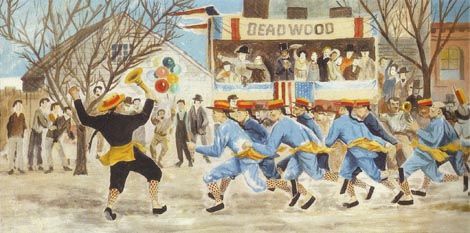 |
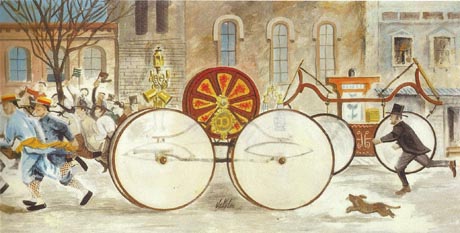 |
|
|
Champion Firehose Team of Deadwood, South Dakota, 1888 Champion Firehose Team of the Deadwood, South Dakota Fire Department, and winners of the Fourth of July Race in 1888. |
||
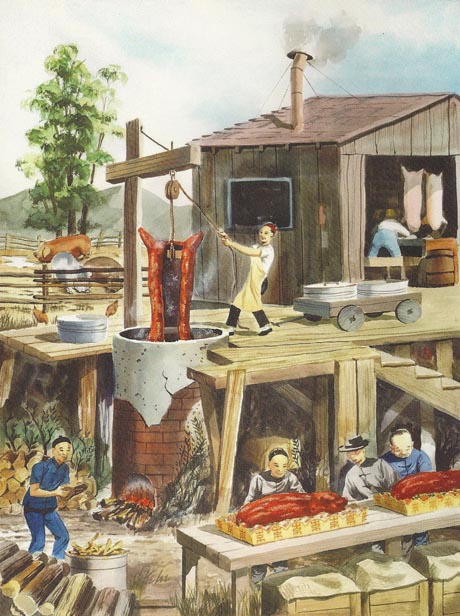 Pig Roasting in Nevada City Crackling roast pig on Sunday, prepared in an outdoor brick pit, cuisine highlight in Chinatown near Nevada City, California |
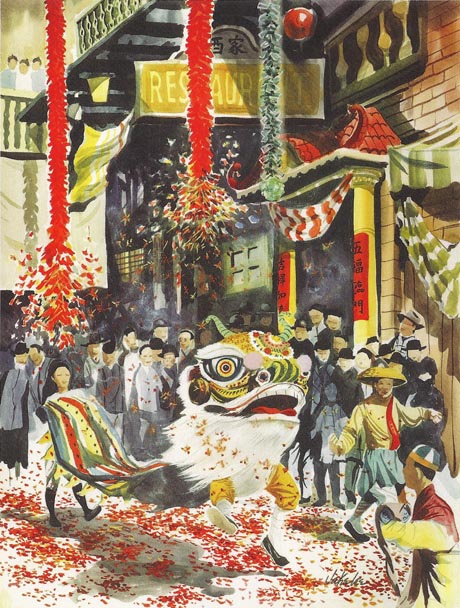 Chinese New Year Celebration Lion Dance and fireworks for charity in San Francisco's Chinatown before the Earthquake in 1906. |
|
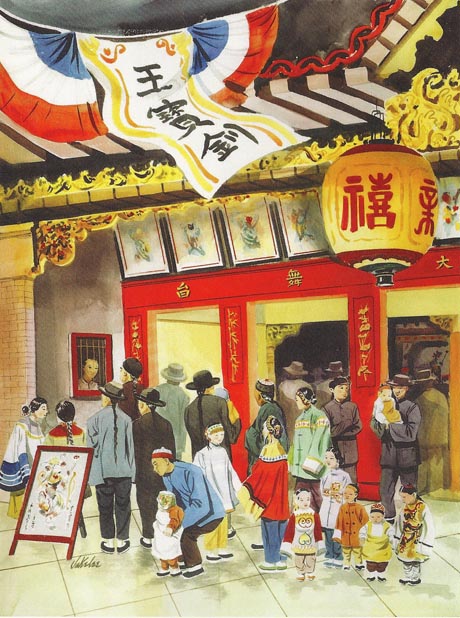 Chinese Opera House, San Francisco Chinese Opera House in early Chinatown, this is a cultural heritage which has been preserved to this day. |
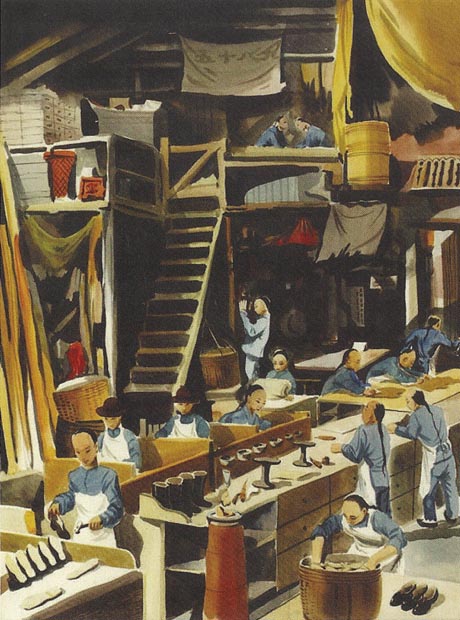 Shoemakers in Massachusetts, 1870 Shoe-making in a factory, North Adams, Massachusetts, in the 1870's, another role the Chinese played in America. |
|
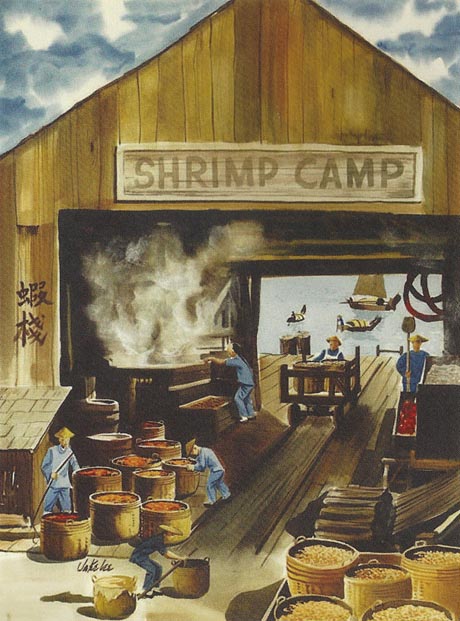 Shrimp Camp at China Camp China Camp located on the Marin coast of San Francisco Bay, a famous location of the fishing and shrimping industry which started in the 1880's. |
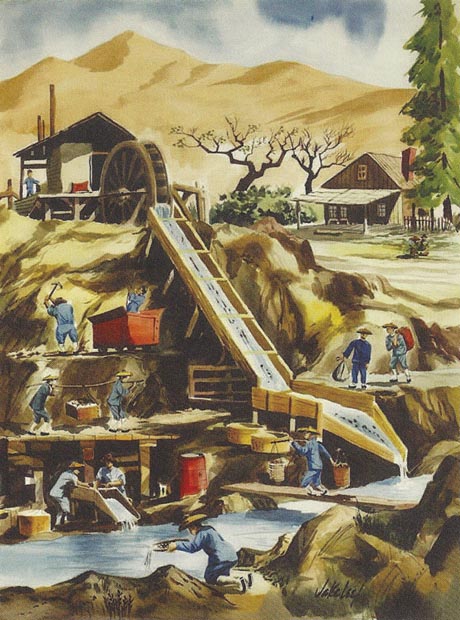 Miners in the Mother Lode Country The 1850's -- Chinese mining the Mother Lode in search of the precious yellow metal. |
|
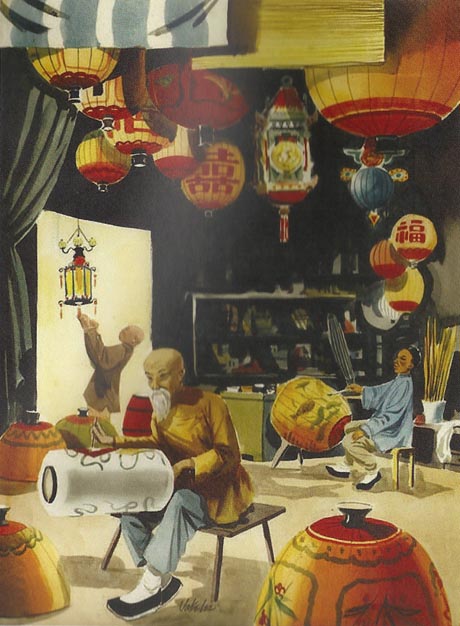 Lantern Making in San Francisco A lantern shop in San Francisco, Chinatown, part of the arts and crafts the Chinese brought to the "Golden Hills." |
|
|
|
Finding Jake Lee is made possible through the generous support of
The Candelaria Fund, Wells Fargo Bank Foundation, Grants for the Arts San Francisco Art Commission, Fifth Age of Man Foundation, Thomas and Eva Fong Foundation, | John and Connie Young Yu, Laura Lai, and Peter Booth Wiley. |
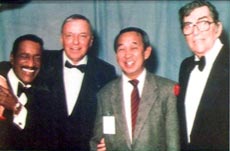 Sammy, Frank and Dino at Kans |
|
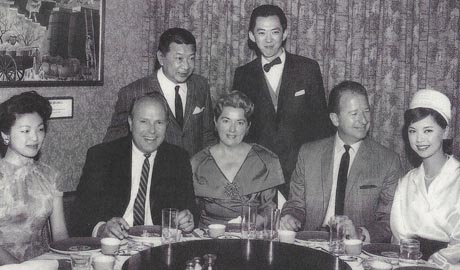 Artist Jake Lee (rear left) and columnist Herb Caen (front second from the right) |
Here are a few examples from the impressive list of appreciative celebrity guests who dined at Kan's Restaurant, one of the preferred activities when in San Francisco. |
|
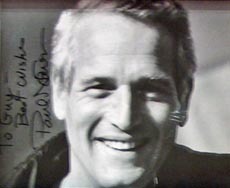 Paul Newman signed photo at Kans |
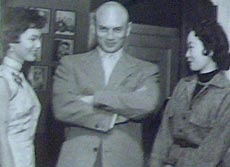 Yul Brenner at Kans |
|
| Back to the Top | ||
 |
|||||||
From the San Francisco Call, November 1, 1901, here is a striking historical context for the "Finding Jake Lee" article above. In 1901, famed California artists Theodore Wores and Amedee Joullin lamented the changing atmosphere in Chinatown. From an artistic standpoint, they felt that improvements to Chinatown's buildings and the introduction of electric lights were eroding the atmospheric quaintness of the once hoveled enclave. They were saddened that this distinctively famed ethnic corner of San Francisco was being sanitized and modernized out of existance. Judged by today's standards, their sentiments were riddled with the prejudice and racism of the times. Wores and Joullin had an acute artistic sense, but they were blind to California's future. Incredible waves of change were headed toward San Francisco. They were situated on the cusp of a new century, which would include the devastation of the 1906 quake just four years hence. And in less than forty years two massive bridges would span the Bay, and be followed with an explosion of population, automobiles and freeways, skyscrapers and airplanes. But Wores and Joullin were not looking ahead. Instead they lamented the change in front of them. Their statements convey a sense that they viewed the slow but steady progress gained by the Chinese people as a bad thing. They failed to see what was before them, an evolving Chinatown and the Chinese community ascending from its lowly immigrant beginnings to assuming a emerging role in the shape and character of the City and of the nation. |
|||||||
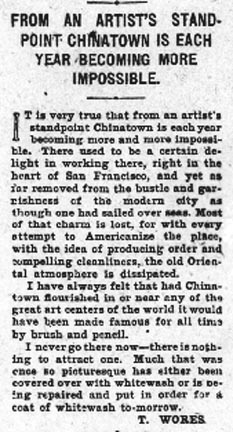 |
At the beginning of the 20th century, a 42 year-old Theodore Wores (1859-1939) and a 40 year-old Amedee Joullin (1862-1917) expressed dismay at these changes. Nearly sixty years later, a 45 year-old artist Jake Lee (1915-1991) celebrated those same changes and the story being forged by the Chinese American people. It is for us today to judge which artistic vision had the greater tale to tell. To the right, Amedee Joullin was equally displeased by the improvements the Chinese were making in their enclave. He had to say this of Chinatown. "Of course it was never a pleasant place to work because of the dirt and the way the Chinese had of scrambling over one's shoulders. But an artist would have it so than as it is. Now that it is being made clean, there will soon be nothing to paint." |
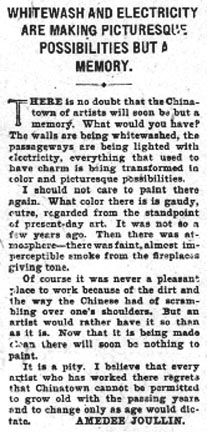 |
|||||
|
|||||||
| The San Francisco Call adds to the comments of Wores and Joullin with its own editorial thoughts | |||||||
 |
|||||||
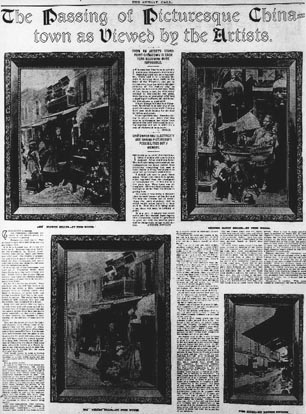 Full Page Article as it appeared in the SF Call |
Chinatown is passing.
San Francisco’s Chinatown, the talked of, the written about, the visited -- it is passing. Perhaps you don’t see it. that all depends upon what kind of an eye you are looking with. If it be a financial eye, of course you don’t see it. Business was never better, say the merchants up Dupont street. Tourists come and go, faster and thicker year after year. the country is prosperous and there is money enough afloat to reach the rare old lacquers and porcelains and ivories that bring the righteous and the unrighteous profit. If it be the eye of the statistician, you don’t see it. Population within those dozen blocks is on the rapid increase, you say. Where once a few pioneer Chinese huddled, now there are thriving families rearing plenty of small fry to fill the tenements even fuller. Ah, but if it be the eye artistic! Then you know only too well that there is no longer in our midst a little, crowded treasure trove of Oriental colors that blend to harmony, of shaky walls and rotting structures that beg to be transferred to canvas. The artists have been robbed of their treasure, they say, and the robbery was committed by a Board. Many men and women who are familiar with every nook and corner and all the devious ways of Chinatown stroll through the narrow streets these days and glance about regretfully, as they note a change in some doorway; the absence of some awning, or the addition of some modern device. |
||||||
They are the people who look for lights and shadows, color effects, types of humanity--they are the artists to whom Chinatown has brought much of happiness and no little measure of fame. It is through their achievements that the place is destined to live for years and years after the city will have razed the present quarter. It is from their viewpoint the death warrant of Chinatown was signed when some men, collectively known as a Board, began to buy whitewash, and it is their Chinatown that is slipping into the waste that past days make. |
|||||||
|
Not an artist, surely. It used to be that not a day passed but the congested alleyways, the obscure courts and even the traveled main streets were dotted with easels. Even though it rained there was always some typical, slant-eyed creature ready to pose. Art students by the score found it inspiring to be working beside painters whose work was already spreading the fame of Chinatown. Now on the sunniest days one may loiter about through the streets, in the shops, anywhere, and find no sign of a pencil or brush. Pretty Chinese children play about the doorways. Curious figures silently scuffle in and out the passageways, but the artists who knew them have departed, apparently for all time. The very atmosphere, they complain, which formerly was to them redolent of Orientalism, quaintness -- “old-world charm,” they called it -- has been replaced by a decided flavor of twentieth century progressiveness. Chinatown as everyone knows, is being put in a |
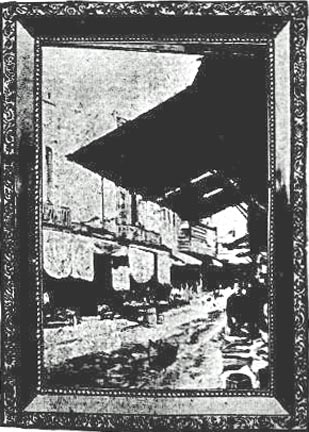 The Alley , Amedee Joullin |
|||||
sanitary condition; at least there are strivings for that result: therefore Art must betake herself to other haunts. For how could anyone with artistic cravings satisfy them in a room where every object stands fully revealed in the radiance of an incandescent lamp. Time was when that same room was filled with shadows and with a soft light falling fitfully here and there from a wonderfully wrought, incense burning lamp. Then it was that artists were at work. It used to be that chimneys were unknown in the precincts of the soft-stepping Chinese, and when at successive hours during the day one Celestial after another would come to cook his little meal of rice and pork, but there was always a pale blue haze from burning wood and charcoal, to soften the color of a flaunting canopy. The curling blue smoke is carried away in flumes now, and gaudy splashes of red and green and yellow flare distractingly on one’s vision. Fresh clean planks in the Chinese theater replace the rotting and begrimed flooring that was once a study in itself. Walls have been covered over with paper in conventional patterns. There is even a white enameled iron bedstead in one little den where less than a year ago ten Chinese used to huddle on bad smelling but picturesque mats. Smoke-stained rafters that were delightfully suggestive of age and primitive living have been painted white. |
|||||||
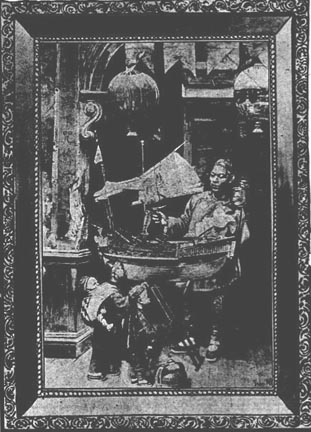 Candy Seller , Theo Wores |
Out on the streets -- even down Fish alley, but more conspicuously in some of the wider avenues -- evidence can be found of the passing. It was a good many years ago that Amedee Joulin painted Fish alley. He found it full of color, of rickety balconies and flapping awnings in varying shades. Into bamboo baskets were gathered bright colored paper scraps. The baskets have disappeared and a cart daily gathers all such refuse from receptacles less antique and more practical. No wonder that Joullin is one of those to say that chinatown has had its day. A stroll through the crooked byways is to him like meeting an old friend in whom some sad change has taken place. Joullin of late has been painting Indians, but his Chinatown pictures were among his best. In the days when Wores painted in Chinatown--it was Theodore Wores who back in the early eighties “discovered” its possibilities, although Jules Tavernier had worked there before--in desultory fashion, Wores painted the pictures that brought him many shekels from people like Earl Rosebery, Sir Thomas Hesketh and Mrs Hopkins Searles and introduced San Francisco’s Chinatown to the art connoisseurs of New York, Boston and London, there was not a vestige of whitewash, not a thought of renovation. He was looked upon by the people he painted as something of an interloper. The story is still told how, in order to get the interior of a josshouse (a place of worship enshrining both Buddhist and Taoist deities), he became a paid-up subscriber to the society. The piece of red paper on which his name is inscribed in odd hieroglyphics may be seen any day posted on the wall of the Sacramento-street josshouse in company with the names of hundreds of Chinese patrons. That slip of paper is an undisturbed memorial of the five years Wores spent among the Chinese. Perhaps more than any other, he has pictured their lives and customs, and a comparison of his paintings with the streets and interiors as seen today will quickly reveal in the difference of scene and color the mutability of art subjects. |
||||||
The old Palace Hotel and the Royal, which once teemed with color and where in each room could be found material for a characteristic sketch, have the past year or so become as commonplace as the most practical Board of Health man could wish. On every street some ornate little balcony, beloved by wielders of the brush, has been removed or painted over. Leaning walls have been straightened and loose boards on the older buildings have been nailed down. On the roofs odd effects secured from a vista in which clothes poles and ledges filled with blooming plants were deliciously mingled are seldom found now. there will be still other departures. One man who used to paint there declared the other day that the inhabitants themselves are coming to lack something that at one time made them excellent subjects for studies. Perhaps they, too, are yielding to the pressure of civilization, and while learning the use of English and soap they may be losing the distinctiveness that has hitherto made them so much worth while to artists. Were a man to begin painting there tomorrow, he would not, as Jules Pages did when he worked on his famous picture, the one that received honorable mention at the Paris salon of 1896 and that helped him to win finally the medal, have to have some one constantly by him to keep the inquisitive Celestials from hanging on his shoulders and his easel. They probably would glance at him from a distance unconcernedly. Piexotto sketched in Chinatown last year, but he did not attempt color, a significant fact. It is said that he will have the distinction of being the last of the artists of any note to seek themes in Chinatown. Even the students, those who send broadcast calendars and Christmas cards, are looking elsewhere for studies, for, like the painters in oil and the many who have done exquisite things in water color and pencil, they feel the change that has gradually been transforming the locality, and they, too, no longer find inspiration there. Chinatown is passing. with every bucket of whitewash the end is hastened. |
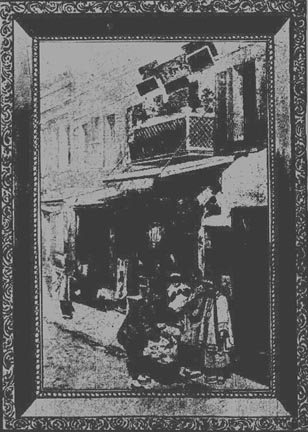 (Title from the newsprint is indistinguisable), Theo Wores |
||||||
| See this article on the Library of Congress website |
Back to the Top | ||||||
Back to the Top
* * * * * * *
Gallery Notes
|
| What's showing in Bodega Bay? | ||||||||
 |
Bodega Bay Heritage Gallery Now at home in our new location! 1785 Hwy 1, Bodega Bay, CA 94923, 707-875-2911 | Map & Location |
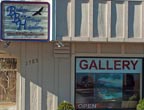 |
||||||
| Celebrating Early California, Western and American Art | ||||||||
| the Small World Custom Framing of Gary Smith |
the oil paintings of Linda Sorensen |
the etchings of Gail Packer |
the Palette Knife paintings of Joshua Meador | the desert paintings of Kathi Hilton |
the Watercolors of Jean Warren |
The oil paintings of Alex Dzigurski II |
||
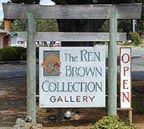 |
The Ren Brown Collection |
|||||||
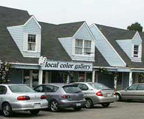 |
Local Color Artist Gallery Spring Flowers ... by Marilyn Batcheller, Lorraine Chapman, Katherine Fell, Marylu Downing, & Michelle Weizenberg Reception, Saturday, April 2nd 1:00 PM - 4:00 PM Through May 1st Gallery Hours, daily 10 AM to 5 PM 1580 Eastshore Dr., Bodega Bay 707-875-2744 | http://www.localcolorgallery.com | Back to the Top |
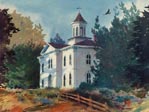 Bodega School House Bodega School HouseRon Sumner |
||||||
| What's showing nearby? in Sonoma, Napa & Marin Counties |
||||||||
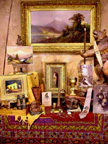 |
IN DUNCANS MILLS Christopher Queen Galleries |
 |
||||||
 |
IN DUNCANS MILLS Quercia Gallery We would also like to invite you to view the last of the winter group exhibits, "Mind~Body~Spirit", Twenty- four Artists, a real treat. Refreshments the first weekend in April. Hope to see you then! |
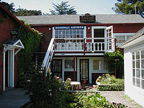 |
||||||
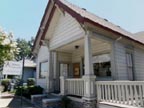 |
IN Santa Rosa The Annex Galleries specializing in 19th, 20th, and 21st century American and European fine prints The Annex Galleries is a member of the International Fine Print Dealers Association (IFPDA). http://www.AnnexGalleries.com | Back to the Top |
|||||||
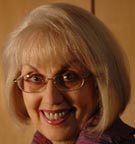 Lee Youngman |
IN CALISTOGA the Lee Youngman Gallery |
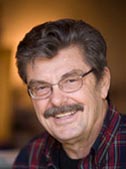 Paul Youngman |
||||||
IN TOMALES Tomales Fine Art |
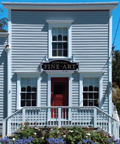 |
|||||||
 |
IN FORESTVILLE The Quicksilver Mine Co. |
|||||||
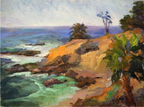 |
IN GRATON Graton Gallery March 1 – April 10 "High Desert Outback" Paintings by Pam Lewis Soo Noga - Abstract Paintings - April 12 – May 22 Artist’s Reception Sunday April 17, 3-6pm 9048 Graton Road, Graton, California (707) 829-8912 http://www.gratongallery.com/ Back to the Top |
|||||||
 |
IN BODEGA Bodega Landmark Gallery Collection 17255 Bodega Highway Bodega, California USA 94922 Phone 707 876 3477 http://www.artbodega.com | Lorenzo@ArtBodega.com | Back to the Top |
|||||||
| IN VALLEY FORD West County Design West County Design provides an unexpected center of artistic sophistication in the charming town of Valley Ford in West Sonoma County. The business serves as a showroom for Bohemian Stoneworks, Current Carpets and Craig Collins Furniture. The gallery also showcases local artisans and quality furnishings for home and business. Bohemian Stoneworks, Current Carpets and Craig Collins Furniture are known for collaborating closely with both business and residential clients and designers from concept to installation. The result is uniquely personal and functional pieces that reflect our clients’ personalities and needs (Across from the Valley Ford Hotel and its famed Rocker Oysterfeller's Restaurant) http://www.westcountydesign.com | Back to the Top |
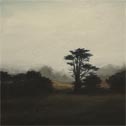 Silouette of Cypress Kai Samuel-Davis |
|||||||
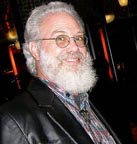 |
IN PETALUMA Calabi Gallery Sebastopol's own famed master conservator Dennis Calabi brings his rare knowledge and experience to present a tasteful and eclectic array of primarily 20th century artwork. From Landscape to Mindscape 144 Petaluma Blvd. North, Petaluma, CA 94952 Call 707-781-94952 http://www.calabigallery.com |Back to the Top |
 Yellow Eye (Protest) by Robert Pearson McChesney, 1946, Oil on Masonit 32 1/2 x 24 |
||||||
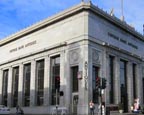 |
IN PETALUMA Vintage Bank Antiques Vintage Bank Antiques is located in Historic Downtown Petaluma, corner of Western Avenue and Petaluma Blvd. It is listed on the National Register of Historic Places. Warren Davis and the rest of the team at Vintage Bank Antiques has assembled a spectacular inventory of paintings. From the 18th Century to Contemporary Artists. We have paintings to suit every price point and collector level. If you have a painting for sale, please consider Vintage Bank Antiques. Contact Warren Davis directly at WarrenDavisPaintings@yahoo.com 101 Petaluma Blvd. North, Petaluma, CA 94952, ph: 707.769.3097 http://vintagebankantiques.com | Back to the Top |
|||||||
 |
IN PETALUMA Petaluma Arts Council "... to celebrate local artists and their contributions and involve the whole community OYSTER FARM Photographs of the Drakes Bay Oyster Company by Evvy Eisen March 25- May 15, 2011, Reception – March 26, 4-7pm featuring Drakes Bay Oysters http://www.petalumaartscouncil.org | Back to the Top |
 Petaluma Art Center Photo:Anita Diamondstein |
||||||
| Links to current museum exhibits relevant to Early California Art | |||
| The Greater Bay Area | |||
The Walt Disney Family Museum |
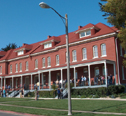 |
San Francisco de Young Museum |
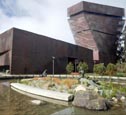 |
| San Francisco California Historical Society Think California September 24, 2009- February 5, 2011 |
 |
San Francisco |
 |
San Francisco Contemporary Jewish Museum Are We There Yet? 5000 Years of Answering Questions with Questions March 31, 2011 - July 2011 |
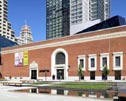 |
Oakland |
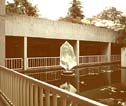 |
San Francisco |
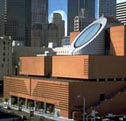 |
San Francisco |
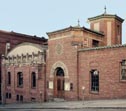 |
| Santa Rosa Charles M. Schultz Museum The Browns & The Van Pelts: Siblings in Peanuts January 29 through June 19, 2011 Downstairs Changing Gallery |
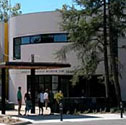 |
Santa Rosa Sonoma County Museum Emerging Artists: Laine Justice, Andrew Sofie, Tramaine de Senna February 11 - April 24, 2011 |
 |
| Moraga Hearst Art Gallery Gift of the Gods: Exploring Maize, Culture and Indigenous Art in the Americas April 10 – June 19 |
 |
Walnut Creek Bedford Gallery, Lesher Ctr for the Arts Land of Magic: Artists Explore Make-Believe April 10 - June 12, 2011 |
 |
| Sonoma Mission San Francisco de Solano Museum featuring the famed watercolor paintings of the California Missions by Christian Jorgensen |
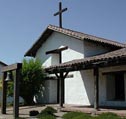 |
Sonoma Sonoma Valley Museum of Art 551 Broadway, Sonoma CA 95476 (707) 939-7862 ECO CHIC: Towards Sustainable Swedish Fashion with Daniel McCormick: Iterations of Ecological Art and Design February 19 - May 15, 2011 |
 |
| Ukiah Grace Hudson Museum American Masterpieces Stories of Home Mar 19 - June 19 http://www.gracehudsonmuseum.org |
 |
San Jose |
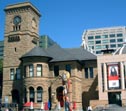 |
Monterey
|
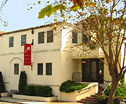 |
Sacramento |
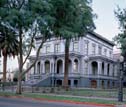 |
| Sacramento Capitol Museum Governor's Portrait Gallery Permanent Exhibits |
 |
Stockton Haggin Museum -Largest exhibit of Albert Beirstadt paintings anywhere, & a superb collection other California, American and European impressionists. -Joseph Christian Leyendecker, Norman Rockwell's mentor and trailblazing cover artist for the Saturday Evening Post |
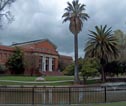 |
| Southern California (and Arizona) | |||
| Los Angeles Los Angeles Museum of Art Art of the Americas, Level 3: Artworks of paintings and sculptures from the colonial period to World War II— a survey of of art and culture. |
 |
Irvine The Irvine Museum |
 |
Santa Barbara |
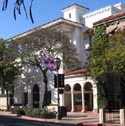 |
Palm Springs |
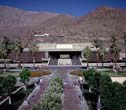 |
| San Diego San Diego Museum of Art Life and Truth: French Landscapes from Corot to Monet Now Through July 10, 2011 |
 |
|
 |
| Pasadena Norton Simon Museum Permanent collection,European paintings Where Art Meets Science: Ancient Sculpture from the Hindu-Buddhist World April 22, 2011 - August 01, 2011 |
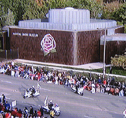 |
Pasadena The Huntington Library American Art Collection Paintings by John Singer Sargent, Edward Hopper, Robert Henri, Albert Bierstadt, Thomas Moran, William Keith, Mary Cassatt, Thomas Hart Benton and many more. |
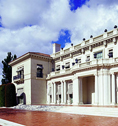 |
Pasadena |
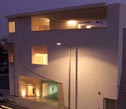 |
Oceanside |
 |
Prescott, AZ |
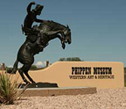 |
Santa Barbara Santa Barbara Historical Museum Missions of Will Sparks February 25 – June 26, 2011 the complete Alma de Bretteville Spreckels collection of Sparks’ final suite with paintings of California, the Southwest and Mexico missions. Painter, etcher, and muralist, Sparks was known for his mission and nocturnal adobe scenes |
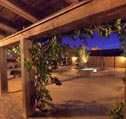 |
| & Beyond | |||
| Seattle, WA Seattle Art Museum Nick Cave: Meet Me at the Center of the Earth March 10–June 5, 2011 Permenant collection: American Art |
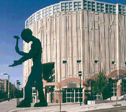 |
Portland, OR |
 |
| Washington D.C. The Renwick Gallery Grand Salon Installation Paintings from the Smithsonian American Art Museum Grand Salon, Renwick Gallery June 6, 2009 — Permanent |
 |
Chicago, IL Art Institute of Chicago Permanent collection: the Impressionists |
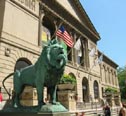 |
| Nashville, TN Frist Center for the Visual Arts William Eggleston Anointing the Overlooked Jan. 21–May 1, 2011 |
 |
Atlanta, GA High Museum of Art The American collection ... paintings by William Merritt Chase, Henry Ossawa Tanner, John Twachtman and Childe Hassam. It includes landscapes by Hudson River School artists, figure paintings by Henry Inman and John Singer Sargent, and still-life paintings by John Frederick Peto, William Michael Harnett and William Mason Brown. |
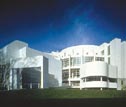 |
| Cedar Rapids, IA The Cedar Rapids Museum of Art Grant Wood: In Focus is an ongoing permanent collection exhibition. |
 |
Washington D.C. The National Gallery Permanent collection American Paintings |
 |
Brooklyn, NY |
 |
New York , NY The Whitney Museum of American Art Modern Life: Edward Hopper and His Time October 28, 2010–April 10, 2011 |
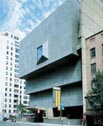 |
